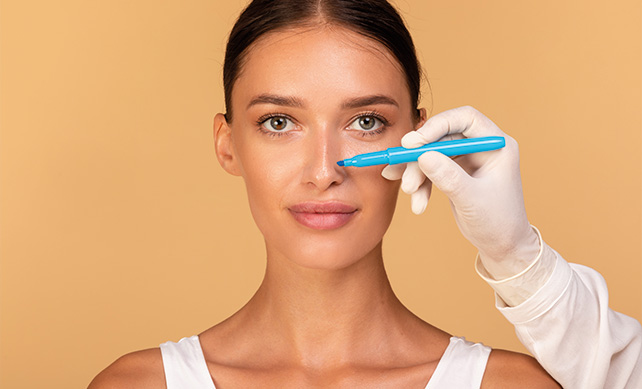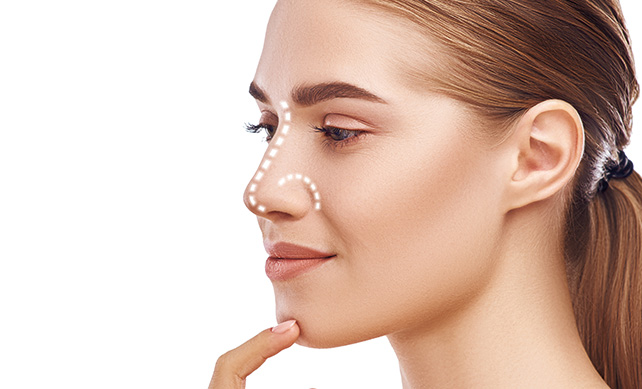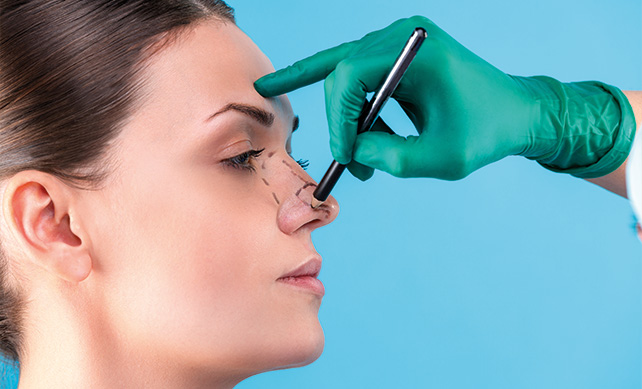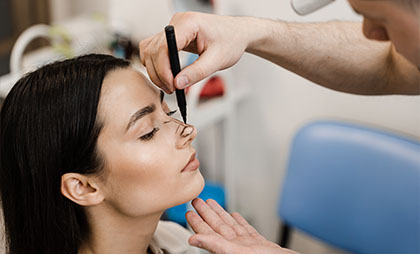What Is A Rhinoplasty Surgery
Rhinoplasty, commonly referred to as a nose job, is a cosmetic procedure that has gained global popularity over the past few decades. The primary goal of this surgery is to alter the size and shape of the nose, enhancing its appearance to better harmonize with the individual’s facial features. Beyond its aesthetic aims, rhinoplasty can also address medical concerns like breathing difficulties, sinus issues, or structural abnormalities of the nose. This single surgical intervention offers patients the opportunity to achieve their desired nasal aesthetics while simultaneously addressing any underlying medical issues.



Techniques Used In Rhinoplasty
Advancements in the field of plastic surgery have led to the development of various techniques for nose jobs in Turkey over the years. These techniques include Closed, Open, and Ethnic Rhinoplasty. General anesthesia is typically required for all of these procedures.
1- Closed Rhinoplasty involves creating an internal incision between the upper and lower cartilage to conceal any visible marks within the nose. It offers a shorter procedure duration and quicker recovery time.
2- Open Rhinoplasty entails making an external incision, typically along the columella, for greater visibility and access. This approach is preferred for correcting significant deviations or noticeable deformities, providing the surgeon with more maneuverability to achieve precise alterations to the nasal structure.
3- Ethnic Rhinoplasty is a specialized form of rhinoplasty tailored for individuals of Middle Eastern, Asian, African, or other non-Caucasian descent. Primarily focused on reshaping the nose and reducing nostril size, this technique addresses unique anatomical features common in ethnic backgrounds.
Candidates For Rhinoplasty
- People with medical problems with their nose
- People who have malformations in the nose from birth.
- People who have suffered from painful accidents that affected their nose bones or shape.
- People who are exposed to diseases that may lead to erosion or deformity of the nose, such as smallpox and leprosy.
- Patients with certain cancers can affect the nasal base.
- The patient must be older than 18 to be a candidate for nose surgery, and their facial features and bones must be developed and complete.
Pre- Rhinoplasty Tips
Preparation for a rhinoplasty procedure involves several important steps:
- Prior to the surgery, plan to take a week off from school or work to allow for proper recovery.
- Consult with your physician and complete any necessary tests they recommend.
- Quit smoking for a period of 2 weeks to 1 month prior to the rhinoplasty.
- Avoid consuming alcohol in the time leading up to the operation.
- Refrain from taking any medications that may thin the blood.
- Consider incorporating Vitamin C into your pre-operative routine as advised.



Rhinoplasty Stages
- Prior to commencing the rhinoplasty procedure, the surgeon mandates that the patient undergoes essential medical examinations.
- Anesthesia administration is a standard practice in rhinoplasty, wherein the patient receives general anesthesia. Subsequently, the surgical team proceeds with making incisions using the appropriate technique tailored to the individual patient.
- The pivotal phase of rhinoplasty involves reshaping the nose. Here, the surgeon meticulously alters the bones and cartilage according to pre-agreed specifications with the patient. Typically, this process encompasses reshaping and elevating the nasal tip.
- Following nose reshaping, the surgeon meticulously closes the incisions and applies a nasal splint. The patient then awaits the gradual unveiling of results, which typically become apparent after a year. Nevertheless, initial changes start to become visible as swelling subsides within a few weeks post-operation.
Post-Operation Tips
After undergoing rhinoplasty surgery, it’s common to experience gradual improvement in how you feel each day during the initial week of recovery. Swelling on the face is to be expected post-surgery. By the end of the first week, you should start feeling better. During this stage, adhering to your doctor’s instructions is crucial to achieving the desired results without complications. Here are some essential tips to follow:
- Take the prescribed medications and antibiotics regularly to prevent any infections.
- Use cold water to gently compress your eyes and nose to reduce swelling.
- Refrain from engaging in vigorous activities until the wound has completely healed.
- Incorporate plenty of fiber-rich foods such as vegetables and fruits into your diet.
- Maintain an elevated head position for several weeks following the operation.



